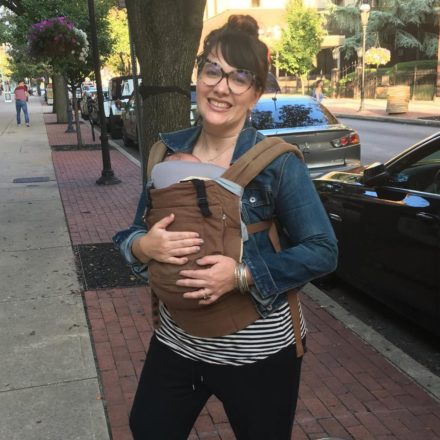Available in Español
 By Heather Laine Talley
By Heather Laine Talley
During our “pause for the cause,” AMKRF has entered a time of organizational reflection and analysis building. As a part of our work, we are sharing reflections about what we’ve learned in the process of building relationships with one another and analyzing power, white supremacy, oppression, alongside liberation.
“One of the purposes of listing characteristics of white supremacy culture is to point out how organizations which unconsciously use these characteristics as their norms and standards make it difficult, if not impossible, to open the door to other cultural norms and standards. As a result, many of our organizations, while saying we want to be multicultural, really only allow other people and cultures to come in if they adapt or conform to already existing cultural norms. Being able to identify and name the cultural norms and standards you want is a first step to making room for a truly multi-cultural organization.” Kenneth Jones and Tema Okun***
Unpacking white supremacy culture–how it shows up in our organizations, in our homes, in our words, and in our thoughts–transcends surface level analysis about equity. As we’ve shared, AMKRF has been reflecting on how white supremacy is reflected in our organizational culture and structure.
Since the violent Charlottesville protests, images of white nationalists are a daily part of our media landscape, but these pictures are dominated by the faces of white men, who unapologetically display their violence, rage, contempt. But white supremacy culture is gendered. White women do white supremacy…differently. White supremacy and patriarchal gender norms converge to create a toxic slurry of behaviors that impact what white women’s racism looks like. Oftentimes, the racism white women perpetuate is less visible, but it is dangerous to think that it is less pernicious.
As our analysis of white supremacy has grown, I’ve found myself asking what are the everyday ways white women show up that maintain white supremacy in a sector that is, ostensibly, about making the world a more just place.
Over the last two decades, I’ve worked in education and nonprofits, spaces where white women disproportionately occupy positions of leadership. I am a white, queer woman, a Southerner, with the disposition, education, and credentials that are (over)valued in these sectors. Historically, AMKRF has been led exclusively by white women and remains a disproportionately white staff.
In the spirit of Tema Okun and Kenneth Jones’ foundational and critically important work on characteristics of white supremacy culture, I’ve compiled a list of characteristics that I have both observed in other white women and have participated in myself with insidious consequences. Oftentimes, I could feel in my body that something wasn’t right, but I lacked the language to connect what was happening to deeply entrenched patterns of white supremacy.
Naming these patterns is not about calling out other white women or distancing myself from whiteness. My own behavior reflects these patterns and has perpetrated harm in ways I did not comprehend in the moment. I have been called on these practices. Sometimes, I heard what folks were trying to tell me. In other instances, it’s taken me years to see the impact of my behaviors.
I believe the following patterns are an important part of the story about why a sector that aims to do good so often falls short of its vision.
Disavowal of Power
One effect of patriarchy is that white women have a complicated relationship with power, which leads to regularly denying/ignoring/downplaying how much power we hold. We invite people to collaborate without explicitly naming who holds the power as a decision maker. We invite other people’s feedback and then proceed with our version of what’s best. In reality, we faux-collaborate. Another way we deny our power is by saying “I don’t know” a lot. Not knowing is often a cover for “Finding out would be too much work.” “The answer to your question reveals inequitable practices that I don’t want to own up to.” “I’ve never asked that question, but you are pointing to something important. I am ashamed I did not ask your question before.”
Antidotes: Deep self reflection about the power we hold and what healthy power looks like. Cultivating relationships with people who will give us honest feedback about how we wield power. Transparent communication about our power with colleagues and community. Concrete responses to feedback and questions, for example, “Let me find out and get back to you by X.”; “What you’re asking about is a place where we are failing to live into our values/mission/vision.”; “That policy/decision/way of doing things is not informed by a deep understanding of equity, and that is a problem that I am committed to solving by doing X.” Honesty about who has the decision making power, when decisions have been made, and whether or not additional input will change a decision.
Obsession with the Future
Women have inherited patriarchal, capitalist models of leadership. A focus on growing, expanding, or working towards an ambitious vision often trumps what is happening in the present moment. Relationships aren’t cultivated. Feedback is dismissed. This obsession with what is coming (over and above what is) leads white women to overlook challenges that need tending in the current moment. We justify this by imagining that the future vision will magically address the problems of the current reality. Ironically, dismissing present realities in favor of a vision of the future is a surefire way to undermine the future.
Antidotes: Grounding practices that build our capacity to regulate nervous system reactions that feed urgency and anxiety. Regular check ins with staff, boards, and volunteers and reflect on the following questions: Does the way we conduct this meeting reflect our values? Are my values (and our organizational values) reflected in the way I am behaving and the choices I am making in this moment and in this situation? Taking deep care to build relationships that center people’s present needs. Crafting culture-building goals that center on transforming existing organizational patterns of white supremacy culture. Articulating and developing accountability processes on benchmarks for gauging organizational transformation.
Performative Anti-Racism
Competing for who is the best white ally in the room (often by publicly dragging other white women), establishing anti-racism expertise, and urgently attempting to build relationships with people of color to make one’s immediate world less homogenous are ways white women show up as performative anti-racists. A deep desire to distance ourselves from white supremacy (rather than wrestling with our role in sustaining white supremacy) leads to performative anti-racism.
Antidotes: Checking our egos by reflecting about our desires to generate kudos. Building meaningful relationships with other white people who are actively anti-racist. Resisting anti-racist self-promotion, especially to people of color. Sharing honestly and humbly about anti-racist efforts when asked. Practicing anti-racism in all white groups with our family, white co-workers, and white neighbors.
Overdelivering
In my experience, this is the hardest trait for white women to see as emblematic of white supremacy. “I gave so much for the cause, I work so hard for the movement. How can that possibly be a bad thing?” Working beyond capacity leads to resentment, and someone will pay for the resentment. Oftentimes, there will be outbursts. We lash out. When the work doesn’t go according to plan, someone will be blamed and likely penalized. Given the existing power structure, people of color disproportionately pay the consequences for our overwork.
Antidotes: Cultivating somatic awareness of our own limits and boundaries. Stopping when we’re at capacity. Resisting the glorification (or celebration) of busy-ness. Giving positive feedback when we see colleagues honoring their needs.
Niceness Above All Else
Patriarchy seeds a deep fear of conflict in women. Breeding fear of conflict is a tried and true strategy for keeping women in line. This fear of conflict is reflected in white women’s communication patterns. Passive aggressive feedback, in-direct communication, or downright lying are ways white women retain a tight grasp on “niceness.” One insidious way white women prioritize niceness is by neutralizing discomfort. When critical feedback is offered, white women often turn the conversation towards “looking on the bright side.” Pointing out white supremacy is dismissed as “being negative.” This has the effect of shaming folks and dismissing essential information about an organization’s impact.
Antidotes: Deep listening through discomfort. Building capacity to navigate conflict. Prioritizing authenticity (including the full range of human emotions) over niceness. Building organizational cultures where direct communication is appreciated and encouraged.
Confusing Informality with Equity
When white women do not believe we are enough, our low self worth leads us to not set limits or boundaries. Trying to be everything to everyone and people-pleasing take many forms–not communicating expectations, shape-shifting, and obsessive thinking about what others think about us rather than our impact. Trying to be “down” takes up more time and attention than dismantling practices of institutional racism and resourcing others.
Antidotes: Completing organizational equity audits. Clearly defining goals and desired outcomes. Getting out of the way of the work.
______
White women are not the only people who exhibit these traits, and nonprofits are not the only structures in which they appear. But as power-holders in non-profits, white women’s behavior forms the backdrop of the nonprofit organizational cultures.
These traits go a long way towards explaining why we see recurring patterns of white supremacy that show up in nonprofits–from the abysmal retention of staff of color to strategies that de-center directly impacted people.
Naming how our ways of showing up have roots in the oppressive and violent structures of this place and time break open what is possible. When we know better, we can do better.
***I am deeply grateful for Kenneth Jones and Tema Okun’s work. The structure of their article inspired this reflection, and their unraveling of white supremacy culture has changed me in fundamental ways and helped me see myself in ways I needed. These ideas were deeply shaped by conversations with Marsha Davis and processes facilitated by Tamiko Ambrose Murray and Beth Trigg. Jessica Fish offered incredible feedback, as did Kristin Wilson who also contributed several of the antidotes included above. I am appreciative to each of you.

